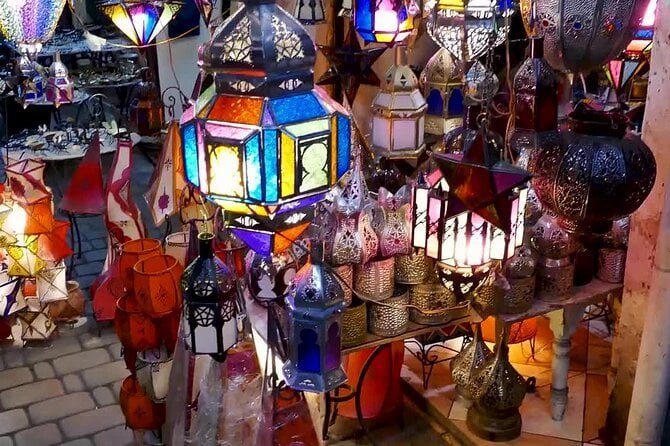
Cultural Immersion in Marrakech: A Journey Through the Medina
Marrakech, the heart of Morocco, is a city that embodies the rich cultural tapestry of the country. Known for its vibrant colors, bustling souks, historical architecture, and the timeless charm of the Medina, Marrakech offers a truly immersive cultural experience. Visitors to the city are transported to a different world, where ancient traditions blend seamlessly with modern life. This article delves into the many facets of cultural immersion in Marrakech, focusing on the Medina, the city’s historical heart, where every street, every corner, and every interaction offers a new discovery.
The Medina: A Timeless Portal to Morocco’s Past
The Medina of Marrakech, a UNESCO World Heritage site, is an enchanting labyrinth of narrow streets, alleyways, and hidden courtyards. At the heart of this maze lies the Jemaa el-Fnaa, the city’s bustling central square, a sensory overload of sights, sounds, and smells. It’s a place where storytellers, street performers, snake charmers, and food vendors gather, creating an atmosphere of excitement and energy.
Wandering through the Medina is like stepping back in time. The streets are lined with ancient riads (traditional houses) and souks (markets), where artisans create their crafts by hand, just as they have for centuries. From leather goods and textiles to pottery, jewelry, and spices, the souks offer an authentic taste of Moroccan craftsmanship. Visitors can watch artisans at work, honing their skills in centuries-old techniques passed down through generations.
The Art of Bargaining
One of the quintessential experiences in the Medina is bargaining in the souks. Negotiating prices is a cultural practice in Morocco, and it’s a skill that both locals and tourists engage in. Sellers start with a price that is typically much higher than what they are willing to accept, and it’s up to the buyer to haggle. This back-and-forth is not only a way to get a good deal but also a social interaction that adds to the vibrancy of the market experience. Bargaining in Marrakech is an art form, and it’s a chance for visitors to connect with the local culture in a fun and interactive way.
Immersing in Traditional Moroccan Cuisine
Food is a vital part of Moroccan culture, and Marrakech offers an unparalleled culinary experience. Traditional Moroccan cuisine is a blend of Berber, Arab, and French influences, creating complex flavors and unique dishes. The street food in Marrakech’s Jemaa el-Fnaa square is a must-try, with an array of stalls offering grilled meats, kebabs, freshly squeezed juices, and Moroccan delicacies like msemen (a type of flatbread), tagine (a slow-cooked stew), and couscous.
One of the best ways to truly immerse oneself in the food culture is by taking part in a cooking class. These classes often take visitors to local markets, where they can shop for fresh ingredients before heading to a traditional kitchen to learn how to prepare classic Moroccan dishes. It’s a hands-on experience that offers not only a deeper understanding of Moroccan cuisine but also an opportunity to bond with locals and fellow travelers over a shared love of food.
The Role of Religion and Spirituality
Marrakech, like much of Morocco, is a deeply religious city, with Islam being the predominant faith. The Medina is home to numerous mosques, including the iconic Koutoubia Mosque, whose minaret dominates the city’s skyline. Visitors can observe the daily rhythm of life dictated by the calls to prayer, which echo through the streets at five intervals each day. The presence of prayer and spiritual rituals adds to the sense of peace and devotion that pervades the city.
While non-Muslim visitors are not allowed to enter mosques, the beauty and grandeur of Marrakech’s religious sites can be appreciated from the outside. The Saadian Tombs, a 16th-century royal burial site, and the Ben Youssef Madrasa, a historic Islamic school, offer further insights into Morocco’s religious and educational history. These sites are architectural marvels, with intricate tilework, carved wood, and gardens that reflect the depth of Islamic art and culture.
The Influence of Traditional Crafts
Moroccan craftsmanship is world-renowned, and Marrakech is home to some of the finest artisans in the country. The Medina is teeming with workshops where visitors can witness artisans working with leather, metal, wood, and clay, producing beautiful, handcrafted items that reflect Morocco’s rich artistic heritage. The tanneries of Marrakech are famous for their centuries-old methods of leather production, where workers dye skins in vibrant hues using traditional techniques. The sight of vast vats of dye and the skilled workers at their craft is a sight to behold.
In addition to leather, Marrakech is also known for its textiles, particularly its carpets. The souks are filled with shops offering handwoven Berber rugs, each one unique in design and color. These rugs often tell the story of the weaver’s tribe, with symbols and patterns passed down through generations. Visiting the workshops and speaking with the artisans provides a deeper understanding of the cultural significance of these crafts and the dedication required to create them.
The Architecture and Gardens of Marrakech
Marrakech is a city of contrasts, where vibrant markets and narrow alleys coexist with peaceful courtyards and lush gardens. The city’s architecture is a blend of traditional Moroccan styles with Andalusian and French influences. The Bahia Palace, built in the 19th century, is an example of the splendor of Moroccan architecture, with its intricate tilework, carved wood, and beautiful gardens. Another iconic site is the Majorelle Garden, a botanical garden designed by French painter Jacques Majorelle in the 1920s. The garden is home to exotic plants, fountains, and vibrant blue structures, providing a peaceful escape from the hustle and bustle of the city.
The Medersa Ben Youssef, once one of the largest theological colleges in North Africa, is another remarkable architectural site. The building features stunning examples of Moroccan craftsmanship, with delicate stucco work, colorful tiles, and a tranquil courtyard. It’s a testament to the importance of education and religion in the city’s history.
Conclusion: A Cultural Tapestry Woven Through Time
Marrakech is a city that invites visitors to dive deep into the culture, history, and traditions of Morocco. The Medina, with its ancient streets, vibrant souks, and hidden treasures, offers a journey through time, where the past is ever-present in the lives of its people. Whether you are bargaining in the souks, sampling the flavors of Moroccan cuisine, or marveling at the architectural wonders, Marrakech offers endless opportunities for cultural immersion.
To truly understand Marrakech is to embrace the pace of the Medina, to lose oneself in its winding streets, to engage with its people, and to savor the beauty of its traditions. It’s a city where every corner holds a story, and every encounter is a chance to learn something new about this captivating and dynamic culture. Marrakech is not just a destination—it’s an experience that stays with you long after you’ve left.
